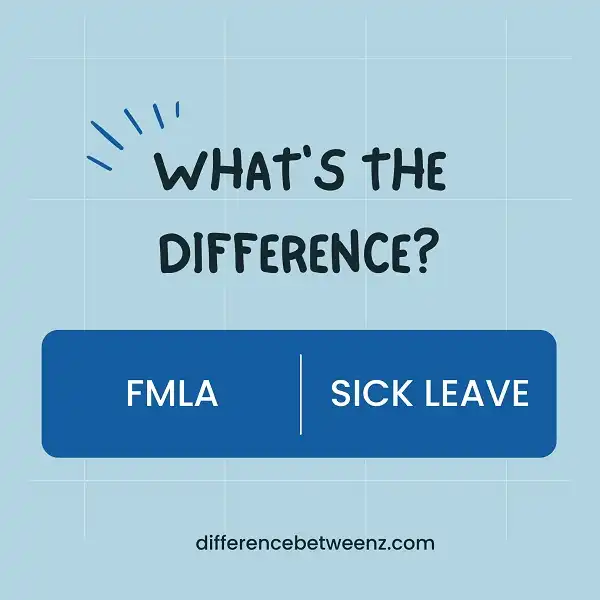Employees often need time off from work to take care of themselves or a family member. This can be for a variety of reasons such as illness, injury, or to care for a newborn child. There are two types of leave that employees in the United States may be able to use: Family and Medical Leave Act (FMLA) leave and sick leave. While both types of leave allow employees to take time off from work, there are some key differences between FMLA and sick leave. In this blog post, we will outline the key differences between FMLA and sick leave so that employees can make an informed decision about which type of leave is best for them.
What is FMLA?
FMLA stands for the Family and Medical Leave Act. It is a federal law that requires employers to provide employees with up to 12 weeks of unpaid leave for certain family and medical reasons. FMLA also requires employers to continue health insurance coverage during the leave and to reinstate employees to their previous job or an equivalent position upon their return. Employees who are eligible for FMLA leave must have worked for their employer for at least 12 months and have logged at least 1,250 hours during that time. FMLA leave can be taken all at once or in increments and can be taken for a variety of reasons, including the birth or adoption of a child, the serious illness of an employee or a family member, or the need to care for a family member with a serious health condition. FMLA leave is an important benefit that helps employees balance work and family responsibilities. However, it is important to note that FMLA leave is unpaid, so employees should plan accordingly.
What is Sick Leave?
Sick leave is paid time off from work that employees can use when they are ill or need to care for a sick family member. Most employers offer some form of sick leave, and many countries have laws that require employers to provide a certain amount of sick leave each year. In the United States, there is no federal law requiring employers to offer paid sick leave, but some states and cities have enacted their own laws on the matter. Paid sick leave can be used for any type of illness, including mental health days, and it can also be used to care for a sick family member. Sick leave is typically paid at the same rate as regular wages, and it does not need to be used all at once. Some employers allow employees to accrue Sick Leave over time, while others require employees to take Sick Leave in increments (such as one hour per week). Sick Leave can be an important benefit for employees, as it allows them to maintain their income while taking time off work to recover from an illness.
Difference between FMLA and Sick Leave
FMLA and Sick Leave are two entirely different things. FMLA is the Family and Medical Leave Act, which is a US federal law that provides employees with up to 12 weeks of unpaid leave for medical reasons. On the other hand, sick leave is leave that is taken for personal illness or injury, and it can be either paid or unpaid depending on the company’s policy. In general, FMLA is for more serious medical conditions that require extended time off work, while sick leave can be used for shorter-term illnesses. However, both types of leave can be used for doctor’s appointments or to care for a sick family member. Ultimately, it is up to the employer to decide whether FMLA or sick leave will be used in a given situation.
Conclusion
The Family and Medical Leave Act (FMLA) entitles eligible employees of covered employers to take unpaid, job-protected leave for specified family and medical reasons with the continuation of group health insurance coverage. Eligible employees are entitled to 12 workweeks of leave in a 12-month period for the following reasons: the birth of a child and to care for the newborn child within one year of birth; adoption or placement of a child with the employee for foster care; care for an immediate family member (spouse, parent, son, daughter, or next of kin) with a serious health condition; or own serious health condition that makes the employee unable to perform the essential functions of his or her job.


